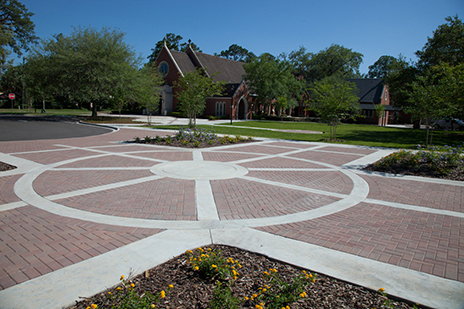Stellar, an architecture, engineering, construction and mechanical services firm, completed the renovation and expansion of St. Mark’s Episcopal Church and Day School.
The project united the school campus and church campus, previously divided by Oxford Avenue, and included a 1,200-sf chapel expansion, a new 10,000-sf commons building, and 7,400-sf of new covered walkways and a drop-off pavilion.
Construction began in June 2011 for the project, which was funded by a capital campaign titled “We are One.” The church and school remained open throughout construction, requiring a carefully orchestrated multi-phased approach.
Stellar worked alongside the project’s architecture firm, Richard Skinner & Associates, and the owner’s representative, Cobb Clark Enterprises (CCE), providing full construction management services for the project. Stellar has extensive experience building faith-based facilities, including Hendricks Avenue Baptist Church, San Jose Episcopal Day School, Southpoint Community Church, the Jewish Community Alliance, First Baptist Church of Middleburg, Christ Episcopal Church and more. +
Related Stories
Building Team Awards | Apr 10, 2015
New arts venue reinvigorates Virginia Tech's campus
The STV-led Building Team creates a world-class performance and arts venue with learning and entrepreneurial dimensions.
BIM and Information Technology | Apr 9, 2015
A carboard box by Google can bring virtual reality to architecture
The global search engine giant has launched a new product, Google Cardboard, that easily allows users to experience virtual reality.
Building Team Awards | Apr 9, 2015
Multifaced fitness center becomes campus landmark
A sloped running track and open-concept design put this Building Team to the test.
Building Team Awards | Apr 9, 2015
Nation's first LEED-certified bus depot
A bus garage in Harlem shows that even the most mundane of facilities can strut its environmentally sensitive stuff.
Building Team Awards | Apr 9, 2015
Setting the bar for port-of-entry design
Whenever you eat a tomato from Mexico, there’s a one-in-three chance it came through this LEED Gold gateway.
Building Team Awards | Apr 9, 2015
Big D’s billion-dollar baby: New Parkland Hospital Tops the Chart | BD+C
Dallas’s new $1.27 billion public hospital preserves an important civic anchor, Texas-style.
Building Team Awards | Apr 9, 2015
IPD-driven fusion facility serves science and student life in Chicago
In dire need of modern science labs and a student union, North Park University built both—in the same building.
Building Team Awards | Apr 9, 2015
‘Prudent, not opulent’ sets the tone for this Catholic hospital
This Building Team stuck with a project for seven years to get a new hospital built for a faithful client.
Building Team Awards | Apr 9, 2015
9/11 museum triumphs over controversy
The Building Team for this highly visible project had much more than design, engineering, and construction problems to deal with.
Building Team Awards | Apr 7, 2015
Unique test facility will help make wind power more feasible
A new facility at Clemson University makes it possible to test the huge stresses that large-scale wind turbines must be able to withstand.

















